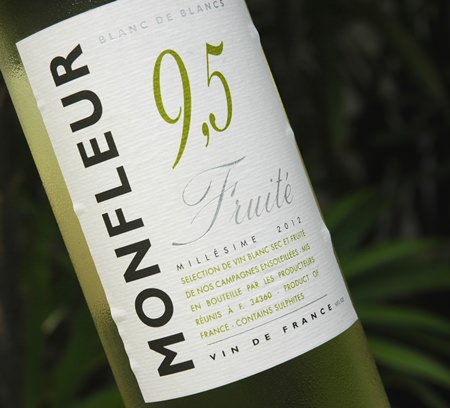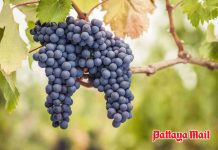The answer, according to the European Union, is when it contains less than 8.5% alcohol. At least, for the time being. In Great Britain, the rising levels of wine consumption among the middle classes have prompted the ever-vigilant Government to support a campaign to lower the minimum strength of beverages that can legally be called “wine” from 8.5% to 4.5%. Many wines these days, especially those from South America contain about 13% alcohol, some as high as 14% and the British Health Minister is evidently concerned about alcohol-related medical conditions.
Without getting unduly complicated, there are two kinds of low-alcohol wines, those which are naturally low in alcohol, and those which have had the alcohol removed by artificial means. These can contain as little as 0.5% alcohol but quite frankly, some of them are not particularly pleasant. In traditional wine making, the ripeness of the grapes (and therefore the amount of sugar they contain) determines the final alcohol level of the wine, because during fermentation the sugar turns into alcohol. Wines naturally low in alcohol tend to come from cooler countries where the grapes ripen to a lesser extent. In Germany’s Rheine and Mosel wine regions, they’ve been making high quality, low alcohol Rieslings for generations.

In Britain, low alcohol wines have seen an increase in sales in recent years. In 2012 for example, sales of beverages below 8.5% alcohol rose to nearly seven million bottles, two million more than the previous year, although this is a drop in the ocean compared to total wine sales. But of course by law, these beverages cannot use the word “wine” on the label and instead they are given wholesome names such as Summer Light.
So why are so many people turning to low-alcohol wines? Well, much of the research has revealed that it’s because of the perceived health benefits. For one thing, low alcohol wines are lower in calories. A small glass (about 125ml) of wine with 13% alcohol contains around 90 calories, whereas the same quantity of wine with 5.5% alcohol contains only about 50 calories. It was also found that people preferred these wines to lessen the intoxicating effects of alcohol. In some countries low alcohol wines are subject to a tax break and can work out significantly cheaper than conventional wines.
When low alcohol wines are made, the alcohol is removed after production and new techniques are becoming available to achieve this without damaging the taste. However, some wine makers claim that they can make natural low-alcohol wines at around 8% which taste as good as the full-fat versions. Even so, at the moment low alcohol white wines, rosés and sparklers tend to taste better than the reds.
Monfleur 9.5 Blanc de Blancs (white), France (Bt. 549 @ Wine Connection)
The nine-point-five refers of course to the alcohol content, although I must confess the figure took me back to the home movies of the late 1950s when 9.5mm was one of the standard film gauges of the day. The expression “Blanc de Blancs” (BLAHN-duh-BLAHN) is a description sometimes found on Champagne labels and simply means white wine from white grapes. The colour of wine usually comes from the grape skins and you can make white wine from red grapes if you take the skins off first.
A shade or two lighter and this wine would be entirely colourless. It’s a pale straw colour with a very delicate and rather elegant floral aroma. I thought I could detect green apples and fresh pears. The mouth-feel is soft and gentle and a few steps away from total dryness, quite a bit of crisp sweetish fruit and just a touch of refreshing acidity. I was surprised to find that the wine also had a very long and fruity finish. It’s so light that it will taste best very cold at around 4°C which is about the temperature of a domestic fridge. It would be fine with salads or light dishes like a classic omelet or quiche.
This is a very attractive and charming wine and at such a low alcohol content would be perfect for a couple of glasses before dinner. That is of course, if you can still afford to drink a couple of glasses before dinner.
Dubœuf Roséveillé Grenache Rosé, France (Bt. 499 @ Wine Connection)
There’s something terribly romantic about rosé wine. For me, rosé conjures up images of high summer and a leisurely al fresco lunch in a luxuriant garden somewhere in the South of France: a blue check tablecloth, a bowl of olives, Mediterranean salads, plates of cheese, hunks of crusty French bread and cold bottles of rosé glistening with condensation in the sunlight. But perhaps I am a bit old-fashioned. Nevertheless, with its fruity lightness, rosé seems more of a lunchtime drink than something for the evening meal but I suppose in our hot season, you could drink it at any time of day. Rosé wines are some of the most versatile wines around and they can make a refreshing accompaniment to many kinds of food. They go well with many vegetarian and Asian dishes too.
Generally, rosé wines do not pretend to be anything grand. They’re usually simple quaffing wines and are best consumed very young when the fresh light fruitiness is at its best. This one is from the well-known French firm of Georges Dubœuf and comes from the South of France. It’s a lovely colour, a sort of pale orangey-pink and made from the Grenache grape, which you’ll know already if you have been paying attention. The Grenache (gruh-NAHSH) is one of the most widely planted red wine grape varieties in the world and probably originated in Spain, though no one seems to know for sure. The wine has a delicate fruity aroma of peach and pear and there’s even a faint reminder of pear drops. It’s delightfully light-bodied, dry and refreshing with a perfectly balanced dash of acidity and an attractive crisp finish. Exactly what a decent rosé should be. And it’s only 12% alcohol content, which in my book is good news.
During the production of rosé wines, the red or purple skins are allowed only a very short contact time with the colourless grape juice. This can vary between a couple of hours or several days. As a result, very little of the colour – and the taste – gets into the wine. The important thing about rosé wines is that you should drink them very cold. The makers of this one suggest you serve it straight out of the fridge. I normally stick a bottle of refrigerated rosé in the freezer for half an hour or so to give it a bit of zing. If the wine gets too warm, it loses all its refreshing charm. So serve it as cold as you dare.




